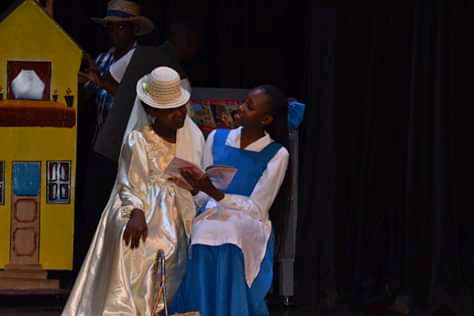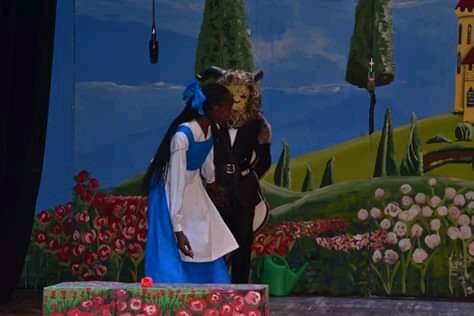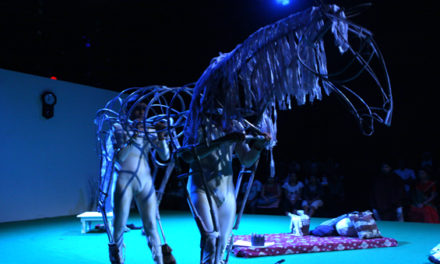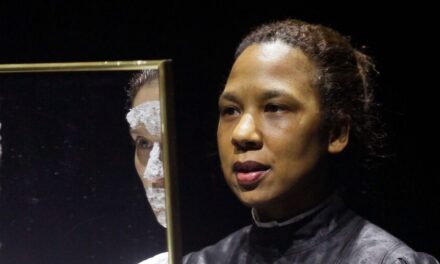It is a full house. Full house on a Friday? That’s rare here. Anyway, we’re almost packed like sardines. I’m sitting next to a lovely three-year-old and her mother. Lovely, until she starts crying. Apparently, the child wants to sit in the stalls where her friends (a one Max and the other name I haven’t heard well) are sitting. We are in the circle. We couldn’t get a seat in the other part of the auditorium. “These seats are numbered, you see. The seat number – the ticket number.” Mother explains, bribing the child with a candy. But the child cries even more, leaving her mother uneasy.

Beauty and the Beast directed and produced by Dr. Nabila Farhat Siddiqui for the Daffodils Young Artists Society. Photos provided by DYAS.
Mother needn’t. For when the show begins, just a couple of minutes after 7:00 pm, the child stops crying. Her loveliness returns and would not desert her for the next one and a half hours. The play has taken her attention. The picturesque backdrops and flats, the fanciful costuming and the children’s sturdy articulation of their roles in Beauty & the Beast, the musical that opened on Friday, 13th March 2020 at the National Theatre in Kampala, could wow anyone who has a taste for fine things, child or not.
Directed and produced by Dr. Nabila Farhat Siddiqui for the Daffodils Young Artists Society (DYAS), a children’s theatre group of the Daffodil School in Kampala, Beauty & the Beast is an adaptation of the eponymous fairy tale, first told as early as 1740. Siddiqui’s stage adaptation is not far from the original plot. Beauty (Lindi Mutanga) and her two sisters ask their father, Master Geltibran (John Patrick Kisoboyi) to bring them presents when he returns from a voyage. Once there, Master Geltibran comes across a beautiful rose flower and remembers Beauty asked for a rose as a present. As soon as he plucks the flower, the owner of the garden, the Beast (Elijah Ariho) emerges and holds him captive. The Beast will only set him free if his daughter, Beauty, is brought to them. The rest is history. Beauty and the Beast madly fall in love.
There’s this intrinsic beauty about children’s theatre – the power of telling a complex story in a simple way. In Beauty & the Beast, DYAS has effortlessly lived to this mark. With a cast of 50 children, the actors, singers, ballerinas, and the band have theatrically reincarnated the old tale with ease. The children (all between ages 9 and 12) go about their roles with the sheer simplicity of ‘Do-you-love-him?-Yes,-Father.’ acting. But the moral of the story rings true. Love wins over revenge, jealousy or ill-luck. Or, in the case of the child next to me here, love in DYAS’s Beauty & the Beast, wins overall whines, be they for sitting next to Max in the other part of the auditorium.
This article was originally posted at theafricantheatremagazine.com on March 24, 2020, and has been reposted with permission. To read the original article, click here.
This post was written by the author in their personal capacity.The opinions expressed in this article are the author’s own and do not reflect the view of The Theatre Times, their staff or collaborators.
This post was written by Ian Kiyingi Muddu.
The views expressed here belong to the author and do not necessarily reflect our views and opinions.


















